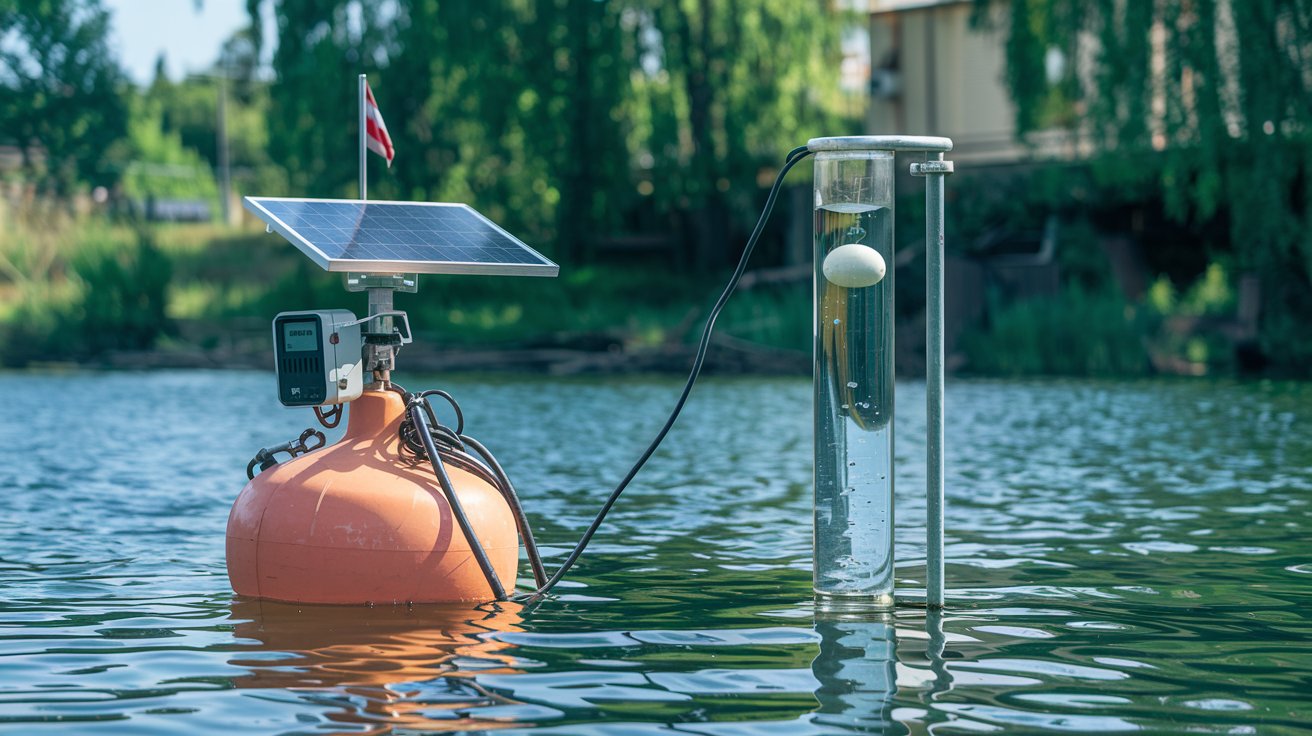Remote Water Level Monitoring for Smarter Water Management

Strong 8k brings an ultra-HD IPTV experience to your living room and your pocket.
Introduction
Let’s be real, managing water systems in today’s world isn’t just about pipes and pumps anymore. It’s about being smart, proactive, and having eyes on your system 24/7 without physically being there. That’s where Remote Water Level Monitoring comes in.
Whether you're running a municipality, managing a wastewater plant, or keeping your irrigation game tight on a farm, remote monitoring turns you into a water wizard, with real-time data, instant alerts, and full control from anywhere.
The Water Management Evolution
Old School vs New School
Back in the day, monitoring water levels meant driving out to sites, manually checking gauges, and logging it all by hand (ugh). That system was time-consuming, error-prone, and super reactive, basically, you’d only find out something went wrong after it went wrong.
Now? One compact device, a cellular connection, and boom, you’ve got live updates right on your phone. Welcome to the new era.
Why It Matters Now More Than Ever
With climate unpredictability, population growth, and aging infrastructure, smarter water management is no longer a nice-to-have. It’s a must. Flood prevention, drought planning, conservation efforts, and even budget management all get a major upgrade with real-time visibility.
What Is Remote Water Level Monitoring?
Okay, let’s break it down.
Remote Water Level Monitoring is the use of sensors and cellular or wireless tech to track water levels and send that data directly to you—usually via a cloud-based platform. These systems are ideal for monitoring:
- Reservoirs and tanks
- Stormwater drains
- Wastewater lift stations
- Wells and boreholes
- Agricultural irrigation channels
And with platforms like OmniSite’s GuardDog, you don’t just see numbers—you get actionable insights, alerts, graphs, and the power to predict what’s coming next.
Core Components of a Monitoring System
The Sensors
Different sensors do different jobs depending on your environment:
Ultrasonic
No contact, mounted above water. Great for tanks and reservoirs.
Submersible Pressure Transducers
Go underwater and handle rough conditions like a boss. Ideal for wells and lift stations.
Radar
Advanced and super accurate, especially in tough weather conditions.
Communication
This is the magic layer. Data from the sensor is transmitted via:
- Cellular (most popular—OmniSite lives here)
- Wi-Fi (limited range)
- Satellite (for extreme remote areas)
- LoRaWAN (for IoT-heavy setups)
Cellular is generally the go-to because it balances range, reliability, and cost.
Software Platform
This is where the brainpower happens. OmniSite’s GuardDog platform, for example, is cloud-based and lets you:
- Check real-time levels
- Set up SMS/email/call alerts
- Analyze trends with easy graphs
- Manage multiple locations from one dashboard
Benefits That Hit Different
1. Save Time and Labor
Forget the drive-outs. Get data from every station without leaving your desk—or your couch.
2. Catch Problems Early
Leaks, overflows, or dry spells? You'll know before they become a crisis. That’s money saved.
3. Optimize Water Usage
With long-term data, you can tweak how and when you use water. Smart for sustainability and your wallet.
4. Compliance and Reporting? Easy.
No more scribbled notebooks. Pull professional reports with a click—great for meeting regulatory requirements or just proving you’re on top of things.
5. Built-in Peace of Mind
Honestly, knowing you’re in control 24/7? Priceless.
Who's Using This and Crushing It?
Municipalities
City and county water departments are using these systems to monitor pumps, lift stations, and reservoirs. It helps them reduce response times and avoid fines for overflows or outages.
Farms & Ag Businesses
Remote fields are no longer a black box. Farmers are using remote sensors to make irrigation smarter and more efficient.
Industrial Sites
Manufacturing plants, chemical facilities, and treatment plants all rely on water at scale. Remote water level monitoring helps them maintain uptime and reduce costly shutdowns.
Why OmniSite Leads the Pack
OmniSite doesn’t just offer the tech—they make it easy. Their XR50 and OmniBeacon devices are rugged, reliable, and built to last in the wild. Plus, with a clean, intuitive platform and free training, you’re not left guessing.
Some key flexes:
- Battery & Solar options: Perfect for remote areas
- Peer-to-peer control: Lets stations talk to each other (yes, like actual teamwork)
- Instant alerts: Text, email, or robocalls—your choice
- U.S.-based support: Actual humans helping when you need it
How to Choose the Right System
1. Know Your Environment
Wet, dusty, remote, cold? Make sure the sensor and device can handle the conditions.
2. Figure Out Your Data Needs
Do you need hourly updates? Event-triggered alerts? Historical data graphs? Choose a system with a dashboard that fits your style.
3. Check the Coverage
Make sure the area has the cellular or network signal needed for connectivity.
4. Think Long-Term
Go for durable devices, low maintenance, and platforms that can scale as you grow.
Conclusion
Remote Water Level Monitoring isn’t just a buzzword, it’s a game-changer. It helps you manage water smarter, faster, and with way less stress. Whether you’re in charge of an entire city’s system or just trying to make sure your farm irrigation doesn’t drown the carrots, the right remote monitoring setup can give you total control from anywhere.
So why wait for problems to show up? Go remote, get smart, and take the guesswork out of water management.
Note: IndiBlogHub features both user-submitted and editorial content. We do not verify third-party contributions. Read our Disclaimer and Privacy Policyfor details.


